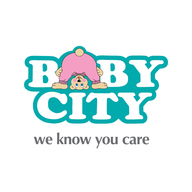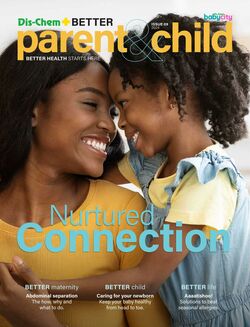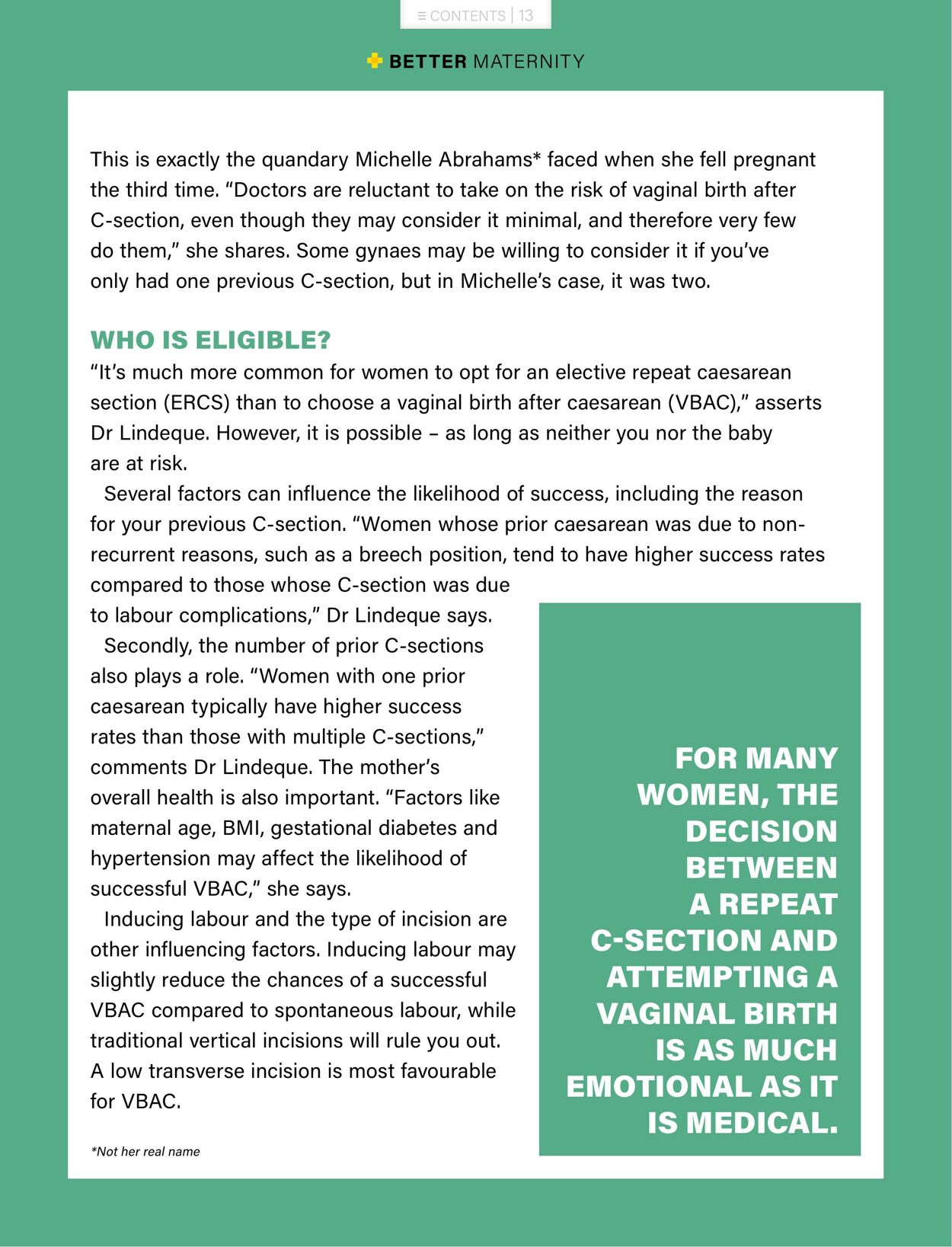













Products in this catalogue
This is exactly the quandary Michelle Abrahams* faced when she fell pregnant the third time. “Doctors are reluctant to take on the risk of vaginal birth after C-section, even though they may consider it minimal, and therefore very few do them,” she shares. Some gynaes may be willing to consider it if you've only had one previous C-section, but in Michelle’s case, it was two. WHO IS ELIGIBLE? “It's much more common for women to opt for an elective repeat caesarean section (ERCS) than to choose a vaginal birth after caesarean (VBAC),” asserts Dr Lindeque. However, it is possible - as long as neither you nor the baby are at risk. Several factors can influence the likelihood of success, including the reason for your previous C-section. “Women whose prior caesarean was due to non- recurrent reasons, such as a breech position, tend to have higher success rates compared to those whose C-section was due to labour complications,” Dr Lindeque says. Secondly, the number of prior C-sections also plays a role. “Women with one prior caesarean typically have higher success rates than those with multiple C-sections,” comments Dr Lindeque. The mother's FOR MANY overall health is also important. “Factors like WOMEN, THE maternal age, BMI, gestational diabetes and DECISION hypertension may affect the likelihood of BETWEEN successful VBAC,” she says. A REPEAT Inducing labour and the type of incision are other influencing factors. Inducing labour may C-SECTION AND slightly reduce the chances of a successful ONES Com. y VBAC compared to spontaneous labour, while WANT PN zi] ae, traditional vertical incisions will rule you out. IS AS MUCH pai incision is most favourable EMOTIONAL AS IT IS MEDICAL. *Not her real name
| Name | Details |
|---|